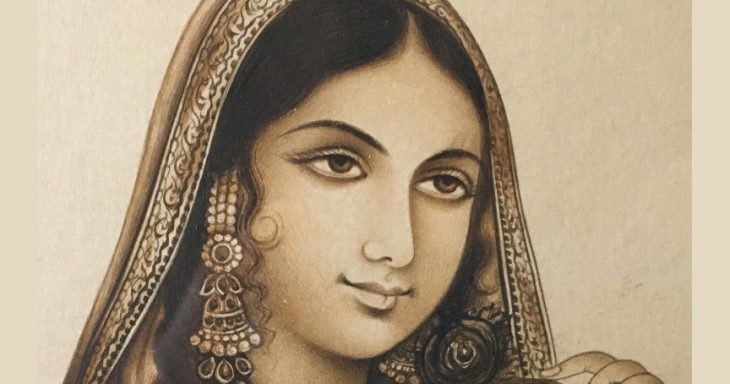History Notes On – Nur Jahan – For W.B.C.S. Examination.
ইতিহাস নোট – নূর জাহান – WBCS পরীক্ষা।
Nur Jahan was the 20th and last wife of the fourth Mughal emperor, Jahangir. She was the most prominent and powerful empress in the history of the Mughal Empire. Strong, witty, well-educated, and charismatic, Nur Jahan was also beautiful, and hence held the attention of Jahangir in spite of being married to another man, Sher Afgan Khan.Continue Reading History Notes On – Nur Jahan – For W.B.C.S. Examination.
After her second wedding with Jahangir, Nur Jahan started controlling the affairs of the state and got involved in everything pertaining to the empire. In fact, she was called by some historians as the ‘power behind the throne’ during Jehangir’s reign. She became the most prominent empress of the empire, and the only Mughal empress to have a coin struck in her name. She was also the only empress to have commanded such honour from the emperor. Nur Jahan is also known for her bravery and weapon-wielding skills. During her reign, poets would praise her for her marksmanship and willingness to hunt down ferocious tigers. As a patron of arts and architecture, Nur Jahan commissioned many famous structures and edifices.
Early Life
Nur Jahan was born to Asmat Begam and her husband Mirza Ghias Beg, who was an aristocrat. Mirza Ghias Beg along with his wife and children, Asaf Khan and Muhammad Sharif, relocated to India where Mughal Empire was at its peak with Emperor Akbar ruling the court.
Upon reaching Kandahar, Asmat Begam, who was pregnant with her third child, gave birth to her daughter whom they named Mehr-un-Nissa (Nur Jahan). She was born on May 31, 1577, post which her father’s fortunes changed as he managed to find a position in Emperor Akbar’s court.
Mirza Ghias Beg, who was convinced that the birth of his daughter had changed his fortunes, took special interest in his daughter’s education and other activities. He made sure Mehr-un-Nissa received the best of education, which was reciprocated beautifully by her as she quickly learned art, literature, dance, and music. She also learnt Persian and Arabic languages and eventually became fluent in both the languages.
First Marriage
Mehr-un-Nissa married Sher Afgan Khan in 1594, when she was 17 years old. Sher Afgan Khan served the Mughal army under the reign of emperors Akbar and Jahangir. In fact, Akbar himself had arranged his wedding with Mehr-un-Nissa as a reward of his loyalty and bravery. In 1605, Mehr-un-Nissa and Sher Afgan Khan were blessed with a daughter, whom they named Ladli Begum.
In 1607, two years after Jahangir had ascended the Mughal throne, Sher Afgan was killed amid several rumors. One such rumor claimed that Jahangir himself might have arranged for Sher Afgan’s killing. The speculation was that Emperor Jahangir had fallen in love with Mehr-un-Nissa and thus wanted to marry her no matter what. However, Jahangir waited for four years after Sher Afgan’s death, before marrying Mehr-un-Nissa.
Marriage to Jahangir
Soon after Sher Afgan’s death, Jahangir summoned Mehr-un-Nissa and her daughter to Agra, where they were appointed as ladies-in-waiting to one of Akbar’s widows, Ruqaiya Sultan Begum. Since Sher Afgan had made many enemies during his lifetime, Mehr-un-Nissa and her daughter’s lives were thought to be in danger. Hence, their safety was cited as one of the primary reasons for appointing them as ladies-in-waiting in the royal court.
While serving in the royal court, Mehr-un-Nissa was also mourning the death of Sher Afgan and it eventually took her almost four years to get herself out of the grief. Meanwhile, she had built a cordial relationship with Ruqaiya Sultan Begum. According to a Dutch merchant named Pieter van den Broecke, Ruqaiya Sultan Begum displayed great affection for the talented Mehr-un-Nissa.
In 1611, four years after the death of Sher Afgan, Emperor Jahangir proposed to Mehr-un-Nissa during the festival of ‘Nowruz,’ which marks the beginning of the New Year. Jahangir managed to convince Mehr-un-Nissa, post which their wedding was arranged. Jahangir married her on May 25, 1611 and bestowed upon her the title ‘Nur Mahal.’ Five years later, she was honored with the title of ‘Nur Jahan,’ which translates to ‘Light of the World.’ Mehr-un-Nissa was thereafter addressed as Nur Jahan.
Please subscribe here to get all future updates on this post/page/category/website


 Toll Free 1800 572 9282
Toll Free 1800 572 9282  mailus@wbcsmadeeasy.in
mailus@wbcsmadeeasy.in



















































































































